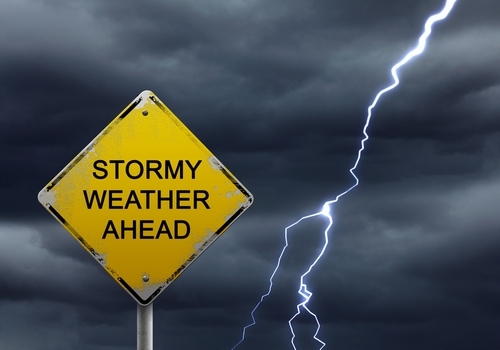
As many golfers and other outdoors enthusiasts can attest, thunderstorms can often strike with little to no warning, especially during the warmer months of the year. The lightning strikes that accompany these thunderstorms pose a serious threat to people and safety. Knowing how to react to a sudden storm is critical to ensuring your safety in any situation when you may be caught unexpectedly. The following tips can help you stay safe when a storm does happen.
- Find indoor shelter. Get inside the nearest available hard-topped vehicle or building, keeping all windows shut, and stay there for at least 30 minutes after the storm passes before returning outside. Avoid picnic tents, pavilions or other open, outdoor structures.
- Get to low ground. Avoid hilltops and open areas. Lightning seeks the highest ground, so if indoor shelter is not available, crouching down in the nearest, lowest, unexposed point is a better bet.
- Distance yourself from tall objects. Never stand near tall structures — particularly metal ones — which can act as lightning rods. Avoid lone trees, flagpoles, telephone poles, fences and antennas.
Do not forget, you can sign up to have local weather alerts letting you know when thunderstorms, hail and other severe weather events are expected in your area.
What if You are Caught Outdoors?
If you are caught outdoors, the flash-to-bang method is the easiest way to estimate how far away a thunderstorm is, and how much time you have to seek shelter. First, count how many seconds pass between the flash of lightning and clap of thunder, then divide by five to find the approximate distance in miles.
Unfortunately, despite your best efforts, you may still find yourself caught outside as an unexpected thunderstorm approaches. In cases when a safe, indoor shelter is absolutely not available, here are some scenario-specific tips that may help lessen your chance of being struck by lightning.
On the Golf Course
If you are nowhere near the clubhouse, move away from hilltops, open areas and water and stay as far away from tall trees and metal conductors, such as wires and fences. Move away from your golf cart and clubs and try to maintain at least 20 feet of distance between you and other golfers on the course. If possible find the lowest place possible, such as a ravine or valley, and squat in a baseball catcher’s position — with your heels touching, ears covered, and head between your knees. Make sure to minimize contact with the ground, and do not lie flat.
On a Boat
Most lightning-related injuries and deaths on boats occur on vessels without a cabin. Larger boats with cabins are relatively safe, particularly when a lightning protection system is properly installed. If you cannot return to shore before the storm hits, drop anchor and get as low as possible or retreat to a cabin if your boat has one. Remember to stay off the radio unless there is an emergency. It is also a good idea to keep away from metallic surfaces, which may conduct electricity. If possible, return to shore before the thunderstorm reaches your boat, and seek indoor shelter.
On a Trail
Always avoid lone trees and other tall objects when on a hiking trail during a thunderstorm. Stay away from rocky outcrops, ledges, water and wet items like ropes and towels. If you are deep in the forest, retreat underneath a group of small trees, preferably surrounded by taller ones. In more open areas, retreat to and crouch down in the closest dry, low area, such as a ravine or valley, and squat in a baseball catcher’s position, and minimize contact with the ground and do not lay flat.
On the Beach?
If you are swimming as a storm is approaching, get out of the water immediately. If your car is parked within walking distance, return to it immediately and head home, or wait at least 30 minutes until the storm has passed before returning to the beach area. Do NOT stand under picnic or other open-sided shelters and never stand under the lifeguard chair or near metal objects (fences, poles). Do not be lulled into a false sense of security if the storm is several miles away. In general, a significant lightning threat extends outward about 6 to 10 miles from the base of a thunderstorm cloud.


Discussion
There are no comments yet.